1952 Glasspar G2, early American fiberglass sports car, ground up restoration
1952 Replica/Kit Makes
Replica/Kit Makes 1952 technical specifications | |
|---|---|
| Condition: | Used |
| Item location: | Atlanta, Georgia, United States |
| Make: | Replica/Kit Makes |
| Year: | 1952 |
| Mileage: | 111,111 |
| VIN: | g253155 |
| Vehicle Title: | Clear |
| You are interested? | Contact the seller! |
Description |
|---|
The Glasspar G2 is widely considered as the first American fiberglass sports car made. In the post WW2 years, southern California was an incubator of innovative automotive and aerospace construction. Fiberglass had been recently invented and became a popular medium for the manufacture of automobiles, boats, and other vehicles. Servicemen returning from overseas had developed a thirst for the sports cars they saw in Europe. The hot rod culture was taking off and cars were getting faster. Your average Joe couldn't afford an exotic Jaguar or Ferrari. All of these factors created the perfect storm for the creation of the American sports car hot rod special. Some of these cars, such as Glasspar, Devin, Victress, and other makes were built by companies. Many other homebuilt sports cars were built by enterprising individuals in their garages at home. Many of these cars gave that well financed European cars a run for their money in SCCA racing. For a fun time check out the 1953 movie Johnny Dark starring Tony Curtis and a slew of American specials including the Glasspar racing across the big screen.
I bought this car from an estate auction of a hot rod enthusiast a few years back. Thanks to Geoff Hatcher of Forgotten Fiberglass, I learned a bit of the earlier history of this car. It once sported a rare Jaguar Type C motor under the hood and I even have a couple of photographs from this period. When the car was first built I believe it had a Ford flathead engine and I decided to put one back into the car. I had the frame blasted and painted and reassembled the chassis and suspension. The custom frame is very well built and Geoff Hatcher agreed that although it does not look exactly like a stock Mameco or Shorty Post frame, it closely resembles them. It even features a slightly offset passenger side rear axle to compensate for the drivers weight-a trick learned from oval track racers. While the frame itself is custom built, all the mechanical components are late 1940s/early 1950s Ford. All these components such as the transmission, torque tube, rear end, and brakes were rebuilt and reassembled to excellent working order. The 1952 239 cubic inch flathead has been tuned for performance and now sports rare Edmunds aluminum heads, Edelbrock dual intake with dual Stromberg carbs with brass velocity stacks, headers, straight exhaust, and other high performance tricks. The gas tank and the radiator were custom made for the car. The wheels are rare early Ford Mercury 15" shod with bias ply tires. Almost everything is period correct including the drivetrain, chassis, wheels, etc. The only concessions to modern convenience are the custom built aluminum radiator with an electric fan to keep things cool, an electric fuel pump for easy starting, and modern hose clamps and a few other minor fittings.
The front end of the body was modified a few years after it was originally built. To me, it resembles a mid to late 1950s Ferrari. I believe that this custom work was done when the Jaguar racing motor was installed. Although by the late 1950s this Glasspar was 5 plus years old, the upgrade of a Jaguar racing motor would make it a contender at the local road racing track. I don't have any racing history of the car but it would not surprise me at all if it came to light. As I was restoring the car, I had to decide to go whether to go back to original or leave the front end like it was. I didn't want to erase any history of the car so I kept with its current look. Plus, it just looks really cool! The body was taken off the chassis and repaired and painted Olde English White.
I used all original restored, NOT reproduction, Stewart Warner curved glass gauges from the 1950s. These expensive and beautiful gauges are set off by the turned aluminum dash. The interior is fairly spartan with custom seats made in the style of a per 1950s sports car.
This Glasspar runs, sounds, and drives great. This would be an great car for vintage racing or open road touring events such as the California Mille. I have a clear title on this car. In the photo section of this ad I included 3 pictures of the bare chassis as it was being restored. Also, I included 2 pictures of the car with the Jaguar racing motor. I also have a link with more pictures and video of the engine running. If you have any questions please don't hesitate to ask.
Clickhere for video of the car running and more pictures
I bought this car from an estate auction of a hot rod enthusiast a few years back. Thanks to Geoff Hatcher of Forgotten Fiberglass, I learned a bit of the earlier history of this car. It once sported a rare Jaguar Type C motor under the hood and I even have a couple of photographs from this period. When the car was first built I believe it had a Ford flathead engine and I decided to put one back into the car. I had the frame blasted and painted and reassembled the chassis and suspension. The custom frame is very well built and Geoff Hatcher agreed that although it does not look exactly like a stock Mameco or Shorty Post frame, it closely resembles them. It even features a slightly offset passenger side rear axle to compensate for the drivers weight-a trick learned from oval track racers. While the frame itself is custom built, all the mechanical components are late 1940s/early 1950s Ford. All these components such as the transmission, torque tube, rear end, and brakes were rebuilt and reassembled to excellent working order. The 1952 239 cubic inch flathead has been tuned for performance and now sports rare Edmunds aluminum heads, Edelbrock dual intake with dual Stromberg carbs with brass velocity stacks, headers, straight exhaust, and other high performance tricks. The gas tank and the radiator were custom made for the car. The wheels are rare early Ford Mercury 15" shod with bias ply tires. Almost everything is period correct including the drivetrain, chassis, wheels, etc. The only concessions to modern convenience are the custom built aluminum radiator with an electric fan to keep things cool, an electric fuel pump for easy starting, and modern hose clamps and a few other minor fittings.
The front end of the body was modified a few years after it was originally built. To me, it resembles a mid to late 1950s Ferrari. I believe that this custom work was done when the Jaguar racing motor was installed. Although by the late 1950s this Glasspar was 5 plus years old, the upgrade of a Jaguar racing motor would make it a contender at the local road racing track. I don't have any racing history of the car but it would not surprise me at all if it came to light. As I was restoring the car, I had to decide to go whether to go back to original or leave the front end like it was. I didn't want to erase any history of the car so I kept with its current look. Plus, it just looks really cool! The body was taken off the chassis and repaired and painted Olde English White.
I used all original restored, NOT reproduction, Stewart Warner curved glass gauges from the 1950s. These expensive and beautiful gauges are set off by the turned aluminum dash. The interior is fairly spartan with custom seats made in the style of a per 1950s sports car.
This Glasspar runs, sounds, and drives great. This would be an great car for vintage racing or open road touring events such as the California Mille. I have a clear title on this car. In the photo section of this ad I included 3 pictures of the bare chassis as it was being restored. Also, I included 2 pictures of the car with the Jaguar racing motor. I also have a link with more pictures and video of the engine running. If you have any questions please don't hesitate to ask.
Clickhere for video of the car running and more pictures
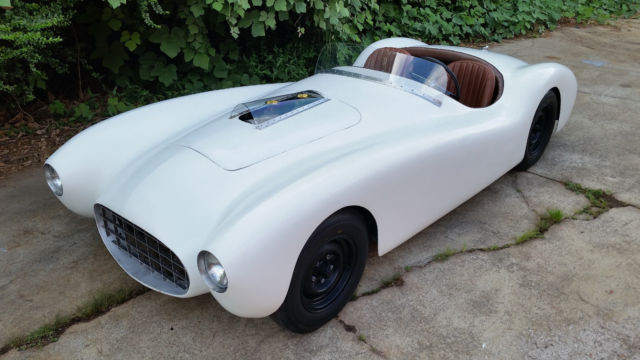
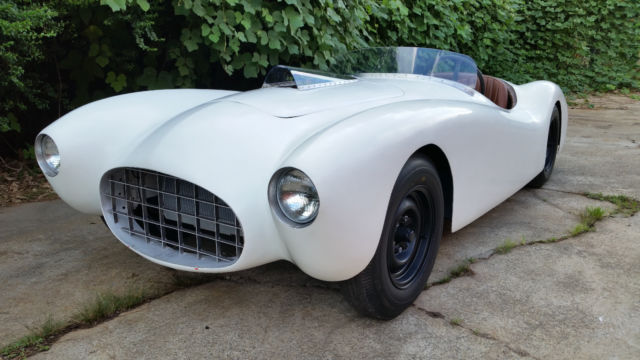
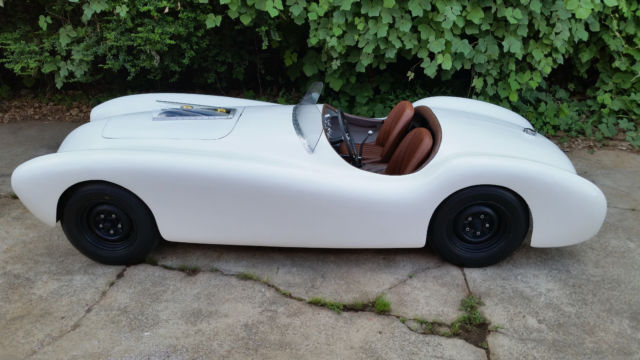
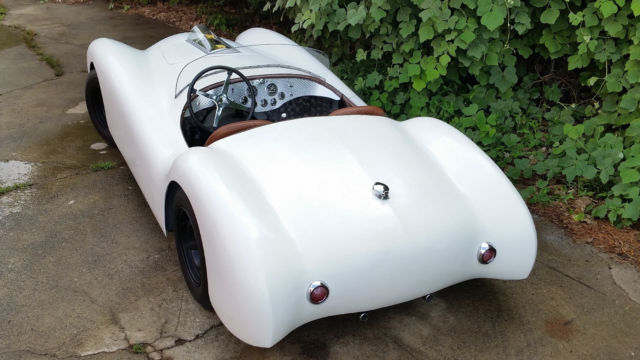
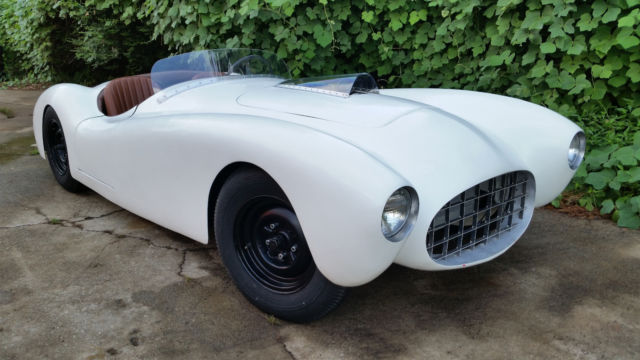
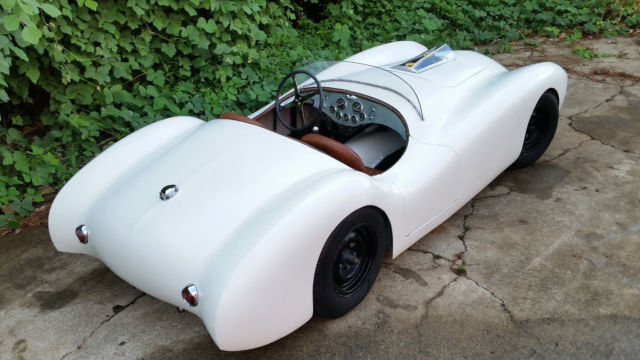
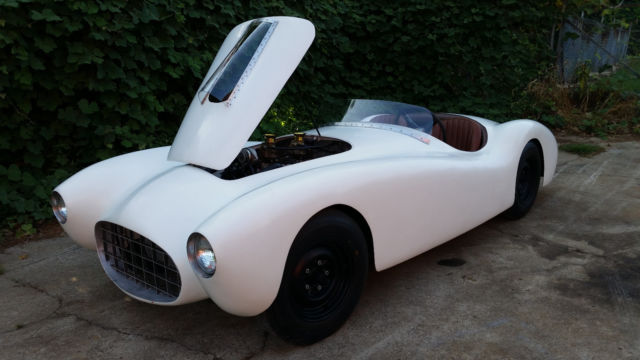
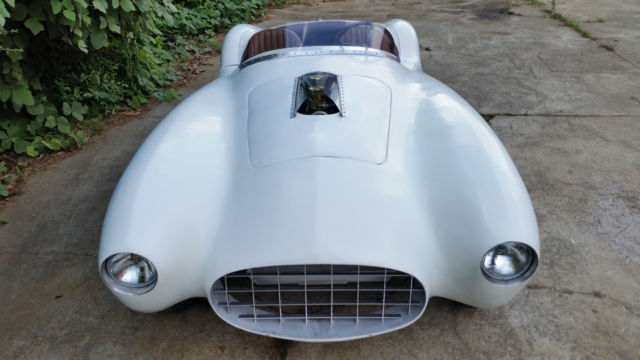
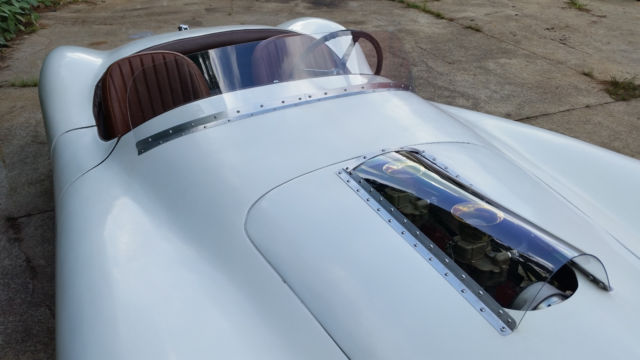
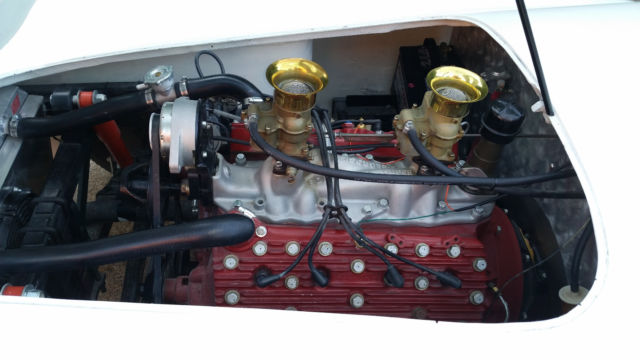
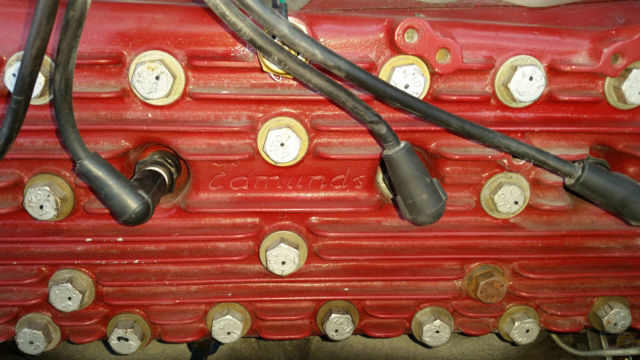
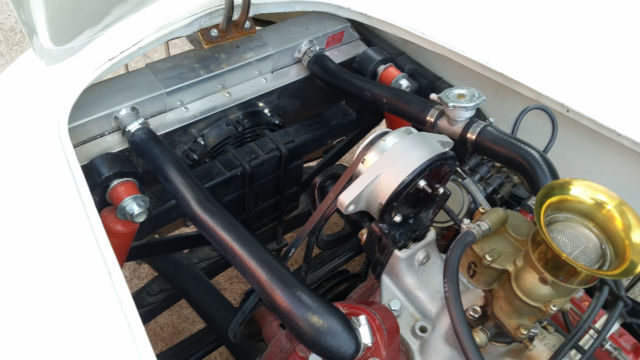
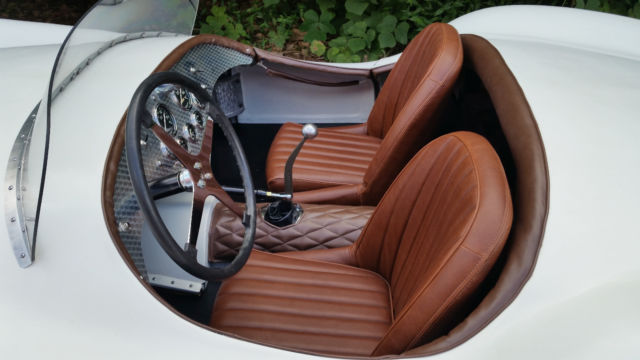
 1969 Triumph TR6 ( Ground up restoration )
1969 Triumph TR6 ( Ground up restoration )
 Ground up restoration, just a stunning automobile. Rebuilt V-12 engine.
Ground up restoration, just a stunning automobile. Rebuilt V-12 engine.
 1947 GMC EC-252 TRUCK 1 TON GROUND UP RESTORATION. VERY RARE FACTORY DUALLY.
1947 GMC EC-252 TRUCK 1 TON GROUND UP RESTORATION. VERY RARE FACTORY DUALLY.
 Classic car, red and white, 2dr sedan 6cyl. 3spd, ground up restoration,
Classic car, red and white, 2dr sedan 6cyl. 3spd, ground up restoration,
 1965 Ford Mustang Cobra Custom Coupe Ground Up Restoration
1965 Ford Mustang Cobra Custom Coupe Ground Up Restoration
 1961 Cadillac Ambulance ,Superior. Ground up restoration. Extremely Rare !
1961 Cadillac Ambulance ,Superior. Ground up restoration. Extremely Rare !
 1957 VOLKSWAGEN OVAL WINDOW BEETLE, GROUND-UP RESTORATION JUST COMPLETED!
1957 VOLKSWAGEN OVAL WINDOW BEETLE, GROUND-UP RESTORATION JUST COMPLETED!